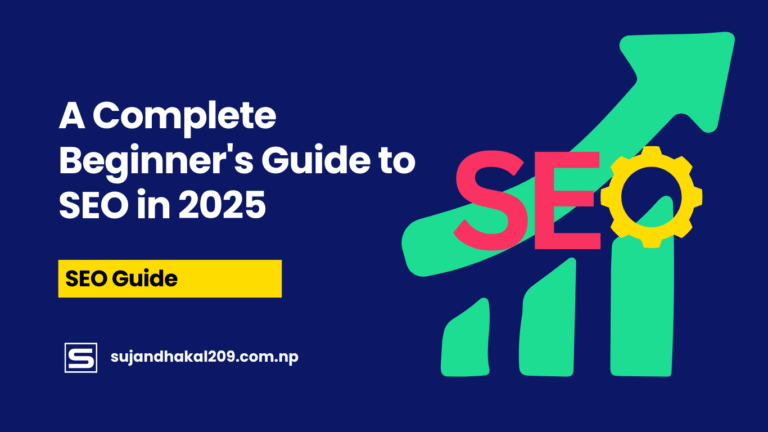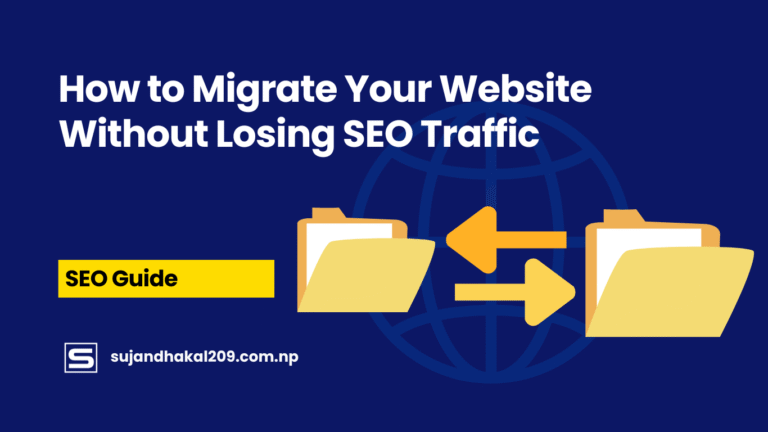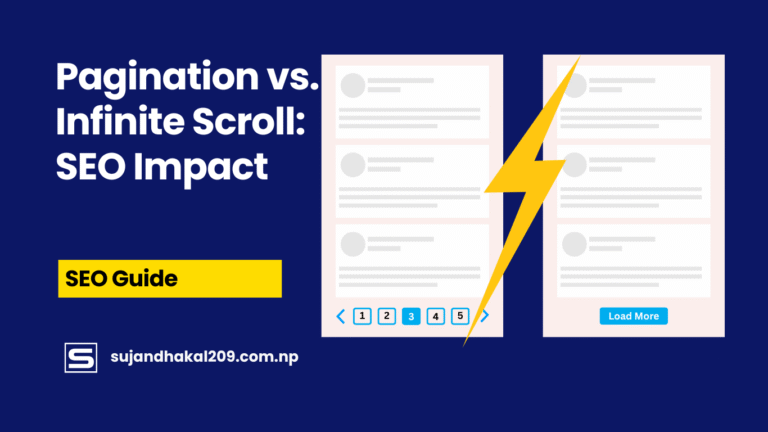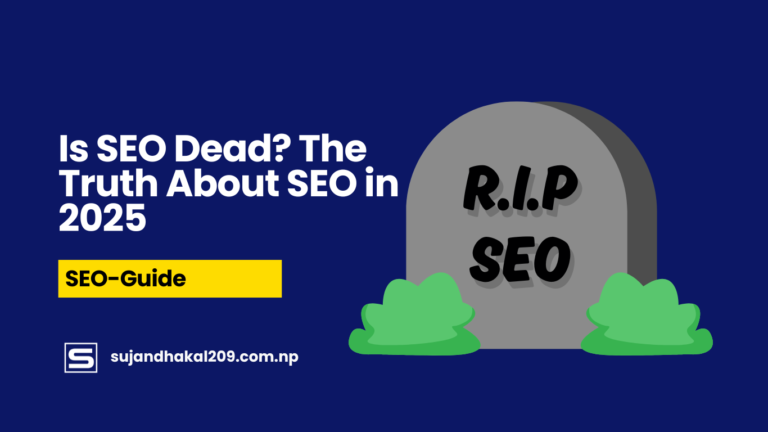If you’ve ever waited impatiently for a webpage to load, you’ve felt the pain that CDNs are built to fix. But there’s more to a CDN—Content Delivery Network—than just speeding things up. CDNs play a crucial role in today’s web experience and, more importantly for marketers and website owners, in your site’s SEO. Understanding what a CDN is and how it affects your SEO strategy could be the game-changer your digital presence needs.
Think of a CDN like the express delivery system for your website’s content. Instead of serving your web pages from a single server located far from your users, CDNs distribute copies of your site across a network of servers around the world. That way, no matter where your visitors are, they can access your site quickly and efficiently. This speed boost doesn’t just delight your users—it earns you points with search engines too.
In this guide, we’ll break down the technicalities of CDNs, dig into how they influence your search engine rankings, and explore why every serious website in 2025 should be using one.
Understanding the Basics of CDN
What Does CDN Stand For?
CDN stands for Content Delivery Network. It’s a system of distributed servers that deliver web content to users based on their geographic location, the origin of the webpage, and the content delivery server itself. This structure ensures that a user in Tokyo receives content from a server nearby rather than one located in New York, for example.
The whole idea is to reduce latency, or the delay before a transfer of data begins following an instruction. The closer the server is to the user, the faster the website loads. It’s that simple—and powerful.
The Core Purpose of a Content Delivery Network
At its heart, a CDN is about performance and availability. Websites these days are more than just text—they’re packed with images, videos, scripts, and stylesheets. If every request for these elements had to go all the way to a central server, the web would be a slower, more frustrating place.
Here’s what a CDN does:
- Distributes your static content (like CSS, JavaScript, and images)
- Serves dynamic content closer to users using intelligent routing
- Balances traffic across multiple servers to prevent downtime
- Protects against DDoS attacks with built-in security layers
So it’s not just about speed. It’s also about keeping your site stable, secure, and scalable.
How CDNs Actually Work
Imagine your website is a popular pizza place. Without a CDN, all orders are made from one kitchen in one location. During rush hour, things get slow, and delivery takes forever. With a CDN, it’s like opening mini-kitchens (edge servers) in every major city. Orders are filled locally, faster, and with less strain on the original kitchen.
Here’s a step-by-step view:
- A user tries to access your website.
- The CDN identifies the user’s location.
- It connects the user to the nearest edge server.
- That server delivers cached content (or fetches from the origin if needed).
- The user gets the webpage significantly faster.
This network efficiency is the secret sauce to a better user experience—and better SEO.
The Architecture Behind CDNs
Edge Servers and Caching Mechanisms
Edge servers are the local branches of your web content. When someone visits your site, instead of the browser fetching the data from the original server (maybe thousands of miles away), it pulls it from a nearby edge server.
These edge servers cache content—storing copies of frequently accessed resources like images, videos, and HTML files. The result? Content is delivered instantly without repeating the same requests.
CDNs use intelligent algorithms to determine what to cache and when to refresh the cache. This smart caching significantly improves load times, which search engines like Google factor heavily into rankings.
Geographic Distribution of CDN Nodes
The power of a CDN lies in its global reach. Providers like Cloudflare, Akamai, and Amazon CloudFront operate hundreds of Points of Presence (PoPs) around the globe. Each PoP includes one or more caching servers.
This distribution means:
- Global users get faster access.
- Localized spikes in traffic don’t affect your origin server.
- Load is balanced efficiently, reducing chances of downtime.
Whether your audience is in Europe, Asia, or the Americas, a CDN ensures a uniformly fast experience—critical for international SEO strategies.
Difference Between Traditional Hosting and CDNs
Traditional web hosting relies on a single server or a cluster in one location. This setup works for local traffic but crumbles under the demands of a global audience.
Here’s a quick comparison:
| Feature | Traditional Hosting | CDN |
|---|---|---|
| Server Location | Single/centralized | Distributed globally |
| Speed | Slower (farther distance) | Faster (closer servers) |
| Downtime Risk | Higher | Lower (load balancing) |
| Scalability | Limited | Highly scalable |
| DDoS Protection | Minimal | Strong integrated tools |
If SEO and user experience matter to your site (and they absolutely should), a CDN isn’t a luxury—it’s a necessity.
Why Page Speed Matters in SEO
Google’s Emphasis on Speed
Google’s algorithm has been all about user experience lately, and speed plays a massive role in that. In fact, since the Speed Update in 2018, page load time has been an official ranking factor, especially for mobile searches.
A fast site means:
- Better rankings
- Higher engagement
- More conversions
And what’s one of the best tools for achieving blazing-fast load times? You guessed it—a CDN.
Bounce Rate and User Experience
Bounce rate is one of those hidden metrics that search engines watch closely. It measures how many users leave your site after viewing just one page. And what’s one of the biggest reasons users bounce? Slow load times.
Imagine clicking on a link, waiting five seconds for it to load, and then deciding, “Forget it.” That’s what happens to hundreds of websites every day, especially if they’re not using a CDN.
A CDN improves this situation by:
- Speeding up initial load times, which encourages users to stay
- Delivering content faster, especially for media-heavy pages
- Minimizing server errors caused by sudden traffic spikes
When users get what they want quickly, they stick around longer. Lower bounce rates send positive signals to search engines, suggesting your content is valuable and user-friendly—which can improve your rankings.
Core Web Vitals and CDN’s Role
Google’s Core Web Vitals are a set of user-centered metrics that rate the quality of the user experience. These include:
- Largest Contentful Paint (LCP) – how quickly the main content loads
- First Input Delay (FID) – how fast users can interact
- Cumulative Layout Shift (CLS) – how stable the layout is during load
CDNs help all three:
- LCP improves because images and videos are served from nearby servers
- FID is reduced thanks to quicker script loading and less main-thread blocking
- CLS benefits from consistent asset delivery, minimizing layout shifts
These vitals are now ranking factors. Using a CDN makes meeting Google’s benchmarks far more achievable.
How CDNs Improve SEO Performance
Reduced Latency Across Geographies
Latency is the time it takes for data to travel from a server to a user’s device. If your website is hosted in the U.S. but your audience is in Asia, latency can ruin the experience.
That’s where a CDN shines. It shortens the physical distance data has to travel by serving your content from the nearest server. This global distribution means your site loads fast, everywhere.
Lower latency improves:
- Crawl speed for search engine bots
- User satisfaction
- Conversion rates
Every millisecond counts, especially in competitive niches. CDNs cut those milliseconds down dramatically.
Enhanced Site Load Times
Google has publicly stated that site speed is a direct ranking factor, especially on mobile. The average user expects a page to load in under 2 seconds. Fail at that, and you risk losing traffic—and rankings.
CDNs accelerate:
- Static content delivery (images, CSS, JavaScript)
- Dynamic content with edge computing
- Entire page loads with intelligent routing
You don’t need to change your hosting. Just plug a CDN into your existing setup and watch your load times shrink.
Better Crawling and Indexing by Bots
Search engines like Google, Bing, and Yahoo rely on crawl budgets—a limit on how many pages they’ll crawl from a site in a given time. If your site loads slowly, bots might crawl fewer pages, affecting how well you’re indexed.
Here’s how CDNs help in SEO:
- Faster load times mean bots can crawl more pages per visit
- Improved uptime means your site is always available to bots
- Consistent performance prevents timeouts and failed crawls
The result? More of your pages indexed, better visibility in search, and stronger overall SEO.
CDN and Mobile SEO Optimization
Handling Mobile Users Efficiently
Mobile users now account for over 60% of all web traffic, and Google uses mobile-first indexing, meaning it primarily uses the mobile version of your site for ranking and indexing.
A CDN ensures mobile users get:
- Faster load times regardless of network quality
- Optimized delivery of mobile assets
- Improved performance on 3G/4G/5G connections
Whether someone’s on Wi-Fi in their living room or using data on a subway, a CDN helps maintain a high-speed experience.
Adaptive Image Delivery with CDN
Images can be a huge drag on mobile page speeds. A CDN solves this with adaptive image delivery—serving optimized image versions depending on device screen size and resolution.
Benefits include:
- WebP format support for smaller, faster-loading images
- Dynamic resizing for thumbnails, banners, and galleries
- Lossless compression to retain quality without bloating size
This not only boosts speed but enhances the visual experience, reducing bounce rates and improving engagement.
Reducing Time to First Byte (TTFB)
TTFB measures how long it takes a browser to receive the first byte of data from your server. A high TTFB often means slow hosting or server overload.
CDNs slash TTFB by:
- Caching content closer to users
- Minimizing the number of server hops
- Utilizing high-performance global infrastructure
Google has indicated that lower TTFB positively affects rankings. Combine this with low LCP, FID, and CLS, and you’re looking at a well-optimized site from both user and SEO perspectives.
Security Enhancements Provided by CDNs
Built-in DDoS Protection
One of the most powerful features of a CDN is its built-in protection against Distributed Denial of Service (DDoS) attacks. These attacks flood your server with traffic, overwhelming it and causing downtime.
A CDN acts like a digital bodyguard:
- Filters malicious traffic at the edge before it reaches your origin server
- Distributes traffic across multiple nodes to avoid overload
- Blocks suspicious IPs with real-time threat detection
Not only does this protect your site, but it also maintains uptime—a key trust signal for both users and search engines. A secure and always-accessible site ranks better.
SSL/TLS Integration for HTTPS
Today, if your site doesn’t use HTTPS, Google might flag it as “Not Secure,” scaring users away and hurting your rankings. Most CDNs offer free SSL/TLS certificates to secure your site.
Here’s how it helps:
- Encrypts data between server and user
- Boosts trust and click-through rates
- Improves SEO rankings, as HTTPS is a ranking factor
With a CDN, you get one-click HTTPS activation, making it easy for any site owner to stay secure and compliant.
Bot Management and Firewall Rules
CDNs are smart. They do more than just deliver content—they help manage who gets access to your site. Through Web Application Firewalls (WAF) and Bot Mitigation Tools, CDNs:
- Block known malicious bots
- Allow only good bots like Googlebot
- Set custom firewall rules to handle unusual activity
This layer of defense ensures your site stays clean, fast, and search engine-friendly.
CDN Benefits for E-commerce SEO
Speed and Conversion Rate Optimization
In e-commerce, speed doesn’t just impact SEO—it directly affects your revenue. Studies show that a 1-second delay in page load can reduce conversions by 7%.
A CDN boosts e-commerce performance by:
- Accelerating product page loads
- Reducing checkout friction
- Supporting high traffic during sales events
A faster site equals more sales, lower bounce rates, and stronger SEO—all in one go.
Improved Image Loading and UX
Product images sell. But heavy image files? They slow you down. CDNs use image optimization to serve high-quality visuals without the weight.
This results in:
- Faster category and product pages
- Zoomable, crisp images without lag
- Mobile-first image rendering
Great visuals with great speed = happy customers and happy Google.
Global Reach for International Stores
If your store sells worldwide, a CDN is your best friend. No matter if your customer is in Paris or Tokyo, they’ll enjoy lightning-fast access to your catalog.
International SEO benefits:
- Faster page speeds for all regions
- Localized content delivery
- Improved indexing in regional search engines
For global growth, CDNs are essential infrastructure.
How to Choose the Right CDN for SEO
Top CDN Providers Compared
There are dozens of CDN providers, but here are the top SEO-friendly ones:
| CDN Provider | Notable Features | Best For |
|---|---|---|
| Cloudflare | Free plan, fast setup, strong security | Blogs, SMBs |
| Akamai | Enterprise-grade, global coverage | Large businesses |
| Amazon CloudFront | AWS integration, deep customization | Developers, tech-heavy websites |
| Fastly | Real-time updates, edge computing capabilities | News, high-traffic platforms |
| KeyCDN | Simple pricing, easy to use | Small businesses, static websites |
Choose based on your needs: cost, performance, support, and features.
Integration With CMS and Platforms
Most popular CMSs like WordPress, Shopify, and Magento support CDN integration out of the box or via plugins.
What to look for:
- Easy setup process
- Support for cache purging
- Custom rules for dynamic content
The easier the integration, the faster you can reap SEO benefits.
Cost vs. Performance Balance
Not every CDN is created equal in pricing. Some offer free basic plans, while others charge based on bandwidth, users, or advanced features.
Tips to choose:
- Start with a free tier if you’re a small site
- Review analytics to see ROI in performance
- Scale up as traffic increases
For most sites, the SEO benefits far outweigh the costs—especially when user experience and rankings improve.
Common SEO Mistakes Without a CDN
Slow Page Speed and Lost Rankings
One of the most damaging mistakes you can make for SEO is ignoring page speed. If you don’t use a CDN, your website may suffer from:
- High latency for international visitors
- Delayed image and script loading
- Sluggish performance during high traffic spikes
These issues not only frustrate users but also lead to ranking drops, especially with Google prioritizing speed and UX in its Core Web Vitals.
By contrast, using a CDN dramatically reduces page load times, improving your site’s chances of landing on page one.
Inconsistent Site Availability
Downtime is a killer for both user trust and search engine credibility. If Googlebot tries to crawl your site during a downtime period—even briefly—it could:
- Miss indexing new content
- Flag your site as unreliable
- Lower your search visibility
CDNs mitigate this by:
- Distributing traffic across multiple servers
- Handling failover during outages
- Ensuring 99.9% uptime, even under attack or heavy load
Consistent availability builds trust with both users and search engines.
Poor User Experience Across Regions
When a website is hosted in just one geographic location, users farther away experience slower load times, increased bounce rates, and clunky interactions.
Here’s where a CDN changes the game:
- Serves content from the closest edge node
- Delivers localized content faster
- Ensures uniform UX no matter the region
For a globally optimized SEO strategy, CDNs are indispensable.
Conclusion
Content Delivery Networks are no longer just a performance luxury—they’re an SEO necessity in 2025. Whether you’re running a personal blog, a global e-commerce store, or a corporate website, a CDN helps you:
- Deliver faster experiences to all users
- Meet Google’s Core Web Vitals
- Improve crawlability and indexing
- Stay secure and online during high demand
Think of a CDN as your digital highway system, speeding up delivery and clearing bottlenecks so search engines and users can reach your content smoothly. It’s time to stop thinking of CDNs as optional—and start treating them as core infrastructure for SEO success.
FAQs
1. Does using a CDN improve SEO directly?
Yes, indirectly. A CDN speeds up your website, which enhances user experience and helps meet Google’s performance benchmarks. Faster sites rank higher and retain users longer—two key SEO advantages.
2. Is a CDN necessary for small websites?
Even small websites benefit from CDNs, especially if they have a global audience or serve image-heavy content. Free CDN services like Cloudflare can significantly improve load times and security without added costs.
3. Can a CDN replace web hosting?
No. A CDN complements your hosting by caching and distributing content. You still need a web host to store your actual site files and handle dynamic content.
4. What kind of content does a CDN serve?
CDNs are ideal for static content like images, videos, CSS, JavaScript, fonts, and even some dynamic content through edge computing. They dramatically reduce the load on your origin server.
5. How quickly will I see SEO results after using a CDN?
Performance improvements are often immediate. SEO benefits, like better rankings and increased traffic, may take a few weeks as search engines re-crawl and index your faster site.





